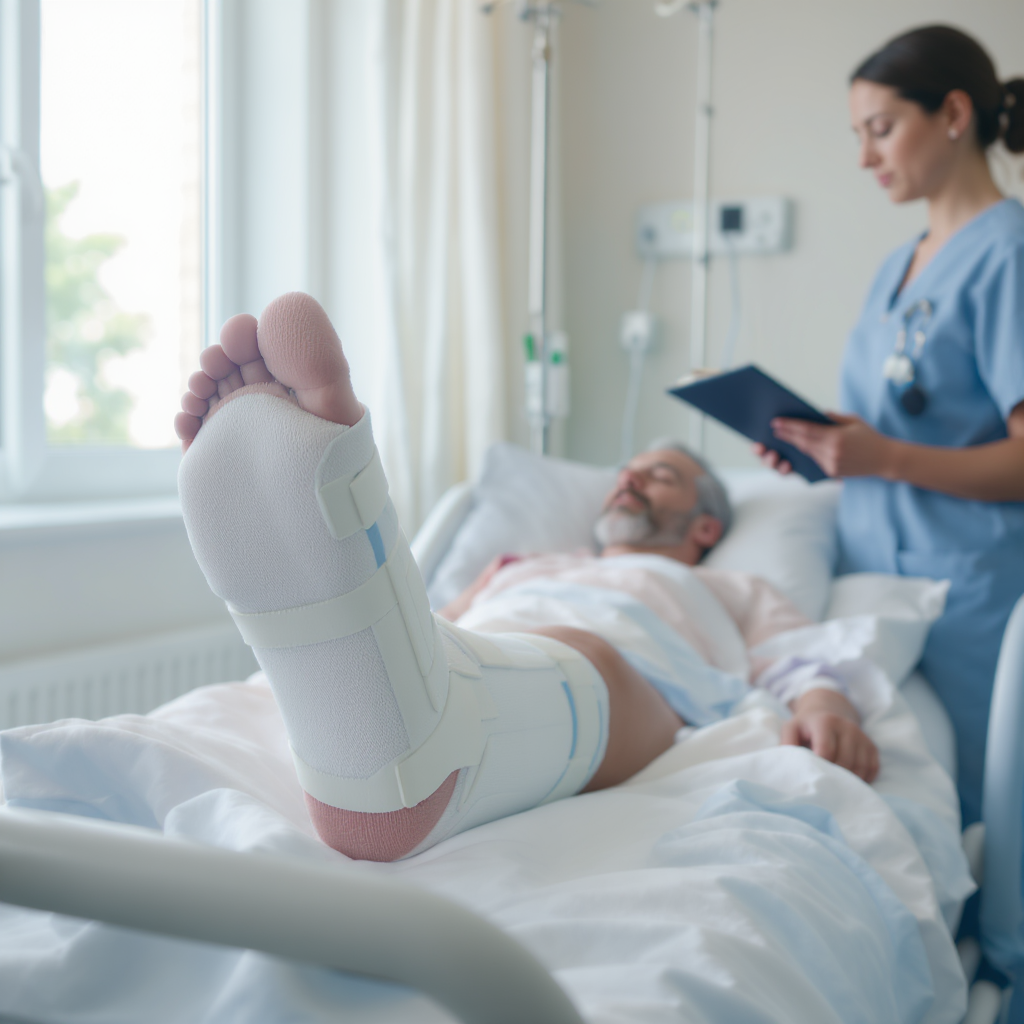Orthopedic Coding Services: The Key to Financial Success in Specialty Medicine
Orthopedic Coding Services
Orthopedic Coding Services . In the intricate world of modern medicine, few fields require the technical precision and specialized knowledge that orthopedics demands . From a simple fracture to a complex joint replacement, each orthopedic procedure represents not only a crucial medical procedure but also a unique challenge in terms of medical coding and billing.
Orthopedic coding has become the invisible bridge that connects clinical excellence to the financial viability of medical practices. In an industry where the margins for error are minimal and the financial consequences can be devastating, having specialized coding services is not just a competitive advantage: it’s an absolute necessity .

The Current Landscape of Orthopedic Coding
Why is Orthopedics Different?
Orthopedics is distinguished from other medical specialties by its extraordinary anatomical and procedural complexity. The human musculoskeletal system comprises more than 200 bones, hundreds of joints, thousands of muscles, and an intricate network of ligaments and tendons. This complexity translates directly into unique coding challenges .
Each orthopedic encounter may involve:
- Multiple simultaneous diagnoses
- Complex surgical procedures
- Specialized implants and devices
- Innovative surgical techniques
- Extensive postoperative follow-up
The Evolution of Medical Codes
With the implementation of ICD-10-CM and the constant updates to Current Procedural Terminology (CPT) , the medical coding landscape has become exponentially more complex. Orthopedic codes have evolved to capture specific details such as:
- Laterality (left, right, bilateral)
- Fracture type (open, closed, comminuted)
- Mechanism of injury
- Stages of healing
- Specific complications
The Fundamental Pillars of Successful Orthopedic Coding

1. Accuracy in Diagnosis
Orthopedic coding begins with an accurate and detailed diagnosis . This goes beyond simply identifying a fracture; it requires specifying:
- Exact anatomical location
- Type and severity of the injury
- Underlying cause
- Complicating factors
- Patient’s functional status
2. Exceptional Clinical Documentation
The quality of coding is intrinsically linked to the quality of clinical documentation . Orthopedic surgeons must provide:
- Detailed operative notes
- Clear medical justification
- Precise description of techniques used
- Documentation of implants and devices
- Complication and resolution records
3. Specialized Knowledge of Procedures
Orthopedic procedures range from simple outpatient procedures to complex, multi-hour surgeries. Each category presents unique challenges:
Arthroscopic Procedures:
- They require specific coding of the compartment treated
- Documentation of the scope of the procedure
- Identification of repair techniques used
Spinal Surgeries:
- Coding by specific levels
- Differentiation between approaches (anterior, posterior, lateral)
- Documentation of fusion techniques
Joint Replacements:
- Specification of the type of prosthesis
- Coding of the surgical approach
- Documentation of revisions or complications
Critical Challenges in Orthopedic Coding
The Enigma of Fractures
Fractures represent perhaps the greatest coding challenge in orthopedics. The complexity arises from multiple factors:
Classification by Type:
- Traumatic vs. pathological fractures
- Complete vs. incomplete fractures
- Displaced vs. non-displaced fractures
- Open vs. closed fractures
Anatomical Considerations:
- Specific location within the bone
- Joint envelope
- Multiple fragmentation
- Soft tissue involvement
Treatment Methods:
- Closed vs. open reduction
- Internal vs. external fixation
- Bone grafts
- Non-surgical management
The Complexity of Implants
Modern orthopedic devices represent a technological revolution that has transformed the treatment of musculoskeletal injuries. However, this innovation comes with significant coding challenges:
Implant Categories:
- Plates and screws for fracture fixation
- Intramedullary nails for long bones
- Partial and total joint prostheses
- Spinal fusion devices
- Biodegradable implants
Coding Considerations:
- Specific codes for each type of implant
- Documentation of size and specifications
- Coding Revisions and Removals
- Management of implant-related complications
Navigating CPT Modifiers
Modifiers are essential tools that provide additional context about the procedures performed. In orthopedics, the most critical modifiers include:
Modifier -22 (Unusual Services):
- Procedures that require substantially more work
- Detailed documentation of additional work
- Clear justification for increased complexity
Modifier -51 (Multiple Procedures):
- Application in surgeries with multiple procedures
- Considerations for fee reduction
- Appropriate order of listing procedures
Modifier -59 (Different Procedure):
- Identification of separate and distinct services
- Preventing inappropriate grouping
- Documentation of different anatomical sites
The Revolution of Specialized Coding Services
Why Outsource Orthopedic Coding?
The decision to outsource orthopedic coding represents a transformative strategy for many practices. The benefits are multifaceted and measurable:
Unparalleled Specialized Expertise: Specialized orthopedic coders possess in-depth knowledge that goes beyond the code manuals. They understand:
- Advanced musculoskeletal anatomy
- Contemporary surgical techniques
- Specialized medical terminology
- Payer-specific regulations
Improved Accuracy and Consistency:
- Significant reduction in coding errors
- Consistent application of rules and guidelines
- Constantly updated with regulatory changes
- Rigorous quality control processes
The Tangible Financial Impact
Specialized orthopedic coding services generate a direct and measurable financial impact :
Increase in Refunds:
- Complete capture of billable services
- Code optimization for maximum refund
- Identifying lost billing opportunities
Reduction in Denials:
- Dramatic decrease in claim rejections
- Faster payment processing
- Reduction in resubmission and appeal costs
Operational Efficiency:
- Release of internal staff for patient care
- Reduction in claims processing time
- Elimination of the need for ongoing internal training
Case Studies: Coding in Real Action
Complex Case 1: Multiple Trauma with Multiple Fractures
Clinical Scenario: A 45-year-old patient suffers a car accident resulting in:
- Open fracture of the right tibia and fibula
- Closed fracture of the left humerus
- Multiple rib fractures
- Ligament injury of the left knee
Coding Challenges:
- Prioritization of main diagnoses
- Coding of multiple surgical procedures
- Appropriate application of modifiers
- Documentation of the complexity of the case
Specialized Solution: The coding team must identify all relevant diagnosis codes, correctly assign procedure codes for each surgical intervention, and apply appropriate modifiers to reflect the complexity of the case.
Complex Case 2: Revision Joint Replacement
Clinical Scenario: 68-year-old patient with total hip replacement failure after 15 years, requiring:
- Removal of existing components
- Bone graft for acetabular defects
- Insertion of new revision prosthesis
- Management of intraoperative complications
Coding Challenges:
- Differentiation between primary and revision arthroplasty
- Coding of additional bone grafts
- Documentation of complications and their management
- Application of device-specific codes
Complex Case 3: Multilevel Spinal Surgery
Clinical Scenario: Patient with severe spinal stenosis requiring:
- L3-L4-L5 decompression
- Posterolateral L3-S1 fusion
- Pedicle screw instrumentation
- Autologous bone graft
Coding Challenges:
- Specific coding by vertebral level
- Differentiation between decompression and fusion procedures
- Documentation of instrumentation techniques
- Bone graft source coding
Future Trends in Orthopedic Coding
Integration of Advanced Technology
Artificial intelligence and machine learning are beginning to transform medical coding:
- AI-assisted coding systems
- Automated documentation analysis
- Predictive error identification
- Workflow optimization
Precision Medicine and Coding
The move toward personalized medicine is creating new coding needs:
- Codes for gene therapies
- Biomarker documentation
- Coding of regenerative medicine
- Advanced minimally invasive procedures
Telemedicine and Remote Coding
The expansion of telemedicine has created new opportunities and challenges:
- Specific codes for virtual consultations
- Remote Services Documentation
- Integration of monitoring technologies
- Coding of digital traces
Successful Implementation of Coding Services
Selecting the Right Supplier
Choosing an encoding service provider requires careful evaluation of multiple factors:
Specialized Experience:
- Specific certifications in orthopedics
- Proven track record in the specialty
- Knowledge of current regulations
- Ability to handle complex cases
Technology and Systems:
- Advanced coding platforms
- Integration with existing systems
- Reporting and analysis capabilities
- Security and HIPAA compliance
Support and Communication:
- Availability of specialized consultations
- Regular performance reports
- Proactive communication about changes
- Support for audits and appeals
Success Metrics
Performance monitoring is crucial to assess the effectiveness of coding services:
Financial Indicators:
- Reimbursement rate per claim
- Average payment time
- Reduction in denials
- Increase in net income
Operational Indicators:
- Claims processing time
- Coding accuracy
- Staff satisfaction
- Workflow efficiency
Regulatory Compliance and Audits
Navigating the Regulatory Landscape
Regulatory compliance in orthopedic coding requires constant attention to multiple authorities:
Centers for Medicare & Medicaid Services (CMS):
- Annual code updates
- Changes in payment policies
- Documentation requirements
- Quality and reporting programs
HIPAA Regulations:
- Protection of health information
- Access and security controls
- Data retention policies
- Data breach procedures
Preparation for Audits
Coding audits are an unavoidable reality in orthopedic practice:
Internal Audits:
- Regular accuracy reviews
- Identifying error patterns
- Continuing remedial education
- Documentation of improvements
External Audits:
- Preparation of supporting documentation
- Timely response to requests
- Collaboration with auditors
- Implementation of corrective actions
The Future of Orthopedic Coding
Emerging Technological Innovations
The future of orthopedic coding is being shaped by revolutionary technological advances :
Augmented Reality in Surgery:
- New codes for AR-assisted procedures
- Navigation Technology Documentation
- Advanced Preoperative Planning Coding
Surgical Robotics:
- Specific codes for robotic surgeries
- Documentation of robotic systems used
- Differentiation of traditional vs. robotic techniques
Regenerative Medicine:
- Codes for stem cell therapies
- Documentation of growth factors
- Tissue engineering coding
Evolution of Payment Systems
Value-based payment models are transforming the way coding is structured:
- Quality codes and results
- Documentation of patient satisfaction metrics
- Coding of quality improvement programs
- Integration of cost-effectiveness indicators
Conclusion: Investing in the Future of Orthopedic Success
In today’s healthcare landscape, where technical precision meets financial viability , specialized orthopedic coding services represent much more than simply outsourcing administrative processes. They represent a strategic investment in the future of orthopedic practice.
The inherent complexity of orthopedics, combined with a constantly evolving regulatory environment, makes specialized coding not only advisable, but absolutely essential . Orthopedic professionals who recognize this reality and act accordingly position themselves not only for immediate financial success, but also for the long-term sustainability of their practices.
The choice is clear: in a world where every code counts, every modifier matters, and every claim can make the difference between prosperity and survival, specialized orthopedic coding services are not a luxury, they are a competitive necessity .
The future belongs to those who embrace precision, value specialization, and understand that in the intricate dance between medicine and business, the best orthopedic coders are the silent but indispensable partners who enable clinical excellence to translate into sustainable success.
The question isn’t whether you can afford to invest in specialized coding services. The real question is: can you afford not to?



